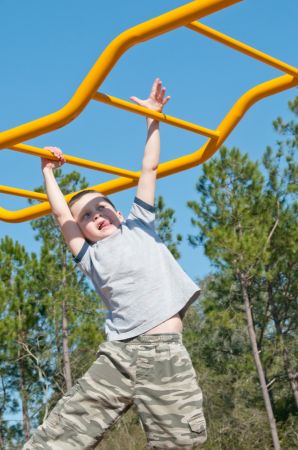Fine Motor Skills, General Information, Help for School and Kindy
Handedness Age in Child Development. Dominant hand – left or right?
Why does handedness age in childhood development matter? It is necessary to develop a dominant hand – to be a left-hander or a right-hander matters – and handedness age plays a role too.
This is not only when you use cutlery, scissors or a pencil. It is but also because the latest research in neuroscience and the neurodevelopmental stages indicate strong connections between handedness and listening. And, specifically, the processing of verbal language.

Looking at a young child using a pencil, who would have thought that the use of a specific hand would be connected to the child’s listening?
A strong dominant side contributes to easy learning, reading and writing. And mixed dominance can be one of the indicators of learning problems. Mixed dominance (doing some tasks with left and some tasks with right hand) often seen in dyslexia, indicate specific problems.
Some people have mixed hand dominance and cope quite well. We might all know a number of high functioning people with mixed hand dominance. However, if it is part of a cluster of related problems, we can expect problems in learning and listening. Handedness in child development matters in particular.
Tomatis has done work in identifying that mixed hand dominance contribute to clumsiness, poor handwriting and poor eye tracking. Consequently, there is an impact on reading and writing. Tomatis used a specific listening program to address this.
However, research has now established that the development of dominance also takes place through specific movements. These follow the normal neuro-developmental stages of a baby’s and of a child’s development.
Addressing posture, low muscle tone, and brain bridging all contribute to the healthy development of a dominant hand. Paying attention to these areas help with handedness in child development.
How would you notice problems with dominance in your child?
Problems are seen during motor activities and exercises when the child seems to be clumsy with a poor rhythm and coordination when running and swimming. Ball skills might be impacted.
Handwriting might lack consistent letter formation and look untidy. The child confuses left and right, and might reverse letters and confuse letters such as ‘b’ and ‘d’.
Forced change of dominance or handedness creates learning problems
In 1999 Springer and Deutsch have indicated that 95% of healthy right-handers process key elements of verbal language in their left hemisphere; 5% in their right hemisphere.
Also, 70% of left-handers process key aspects of verbal language in the left hemisphere, 15 % in the right and 15% bilaterally (left and right).
These percentages, as such, are not as important as the fact that we do not know where a specific child processes language. Thus, we cannot force a child to change the dominant hand as we do not know what the effect will be on language, reading and writing.
How does the lack of the development of dominance or handedness age affect school work?
The dominance of handedness in child development should be firmly established between the ages of 5 and 7 years.
However, nowadays the children go to school earlier, and the ideal handedness age may not be considered. They have to participate in many desktop activities and writing-related activities at a young age.

When the child has not developed a strong dominant hand, it might create challenges with school work. This child might avoid fine motor skills and writing related activities.
The child often lacks the optimal development of writing-related skills. This is because the child does not consistently perform a specific task with a specific hand. The child does not use one hand as a dominant hand (working hand) and the other hand as a supportive hand (helper’s hand).
This trend complicates some tasks, such as:
- writing (‘helper’ should stabilize the paper or book),
- cutting (‘helper’ should control the paper whilst ‘worker’ manipulates the scissors),
- beading,
- lacing and
- using a knife AND a fork.
The child often prefers to avoid these tasks.
The child might avoid the crossing of the midline of the body. The writing book is usually on the desk in front of the child. And, it doesn’t matter which hand the child uses, he or she has to cross the midline of the body when writing from left to right.
I have seen little ones swapping hands when the left-hand reaches the midline of the body to avoid the hand to cross to the other side.
This tendency is associated with poor brain bridging or bilateral integration. You can begin to see just how critical handedness in child development is.
Brain Bridging / Bilateral Integration and Sequencing
Brain bridging means the communication between the two hemispheres of the brain. Movements of the two sides of the body and the coordination of these movements give us an indication of well the two hemispheres communicate.
Brain bridging affects movements, especially rhythmical repetitive movements that involve alternating the arms and legs such as marching and aspects of swimming.
Brain bridging (Bilateral Integration and Sequencing) impacts the understanding of sequences such as timetables or spelling, or even on the sequence of events as when telling a story or reporting on the events of the day. This means that it also impacts executive functioning and working memory.
Hand writing
When a child swaps hands or does not practice fine motor skills consistently with a dominant hand, hand writing can be impacted. Letters usually slope all in the same direction to create a neat pattern of writing.
When a dominant hand is not established, the child’s writing might look untidy, letters might slope in different directions and letter formation might be incorrect.
The child might also have issues with the identification of left and right and might therefore reverse letters or confuse some letters such as ‘d’ / ‘b’ or ‘p’ / ‘q’.
The younger child might write in mirror images. A common problem is to read incorrectly e.g. ‘13’ instead of ‘31’ or to spell incorrectly e.g. ‘caught instead of ‘caught’.
You can encourage the development of a dominant hand
Following the neurodevelopmental stages, you should encourage bilateral movements of the body.
- The two sides of the body doing the same movements: ball games, pushing, pulling, gross motor play, monkey bars, swinging, climbing. Using shaving foam or finger paint to make big circles with both hands on the lawn, on big sheets of paper or on the wall tiles in the bathroom.
- The two sides of the body doing alternating and asymmetrical movements: Crawling, wheelbarrow walk, swimming, running, climbing, rhythmical dancing, marching.
- The fine motor tasks: lacing, glue and paste activities, cutting using scissors, peg board, making small shapes and balls with play dough.
What to do when a child swaps hands
Use the activities listed above. Start with 1. and proceed to 2. and 3.

Once you see that your child is competent and fluent in bilateral movements. Level 3 will specifically address issues with dominancy.
However, dominancy is seldom the only problem. You have to check your child’s posture, the ability to sit still and to concentrate, general muscle tone and how well your child understands instructions.
You can contact us if you need more information or if you want to discuss your child’s strengths and possible problems. To make a booking, visit us for a consultation.
Works cited:
S.P.Springer and G. Deutsch: Left Brain Right Brian: Perspectives from Cognitive Neuro-science (New York: LW.H.Freeman, 1999), p.22.
N.Doidge: The Brain’s Way of Healing (Victoria, Australia: Scribe Publications, 2015). P 297.
Fisher, A.G., Murray, E.A. and Bundy, A.C.: Sensory Integration: Theory and Practice (Philadelphia, 1991).
Your photo of a young red headed boy at his school desk: >no teacher seems to have taken the simple trouble to show him by turning his paper the opposite way to his right handed friends, he would never have to write as he is doing in the photo nor would he smear ink or soft pencil for this would never happen if his paper was turned to accommodate his left handedness, just by turning his paper.
Do you test for eye dominance, very important if the child is ever going to be successful in hitting a target, shooting a bow and arrow. You will never hit the target if shooting from your right shoulder when your lead eye, for whatever reason, is your left eye.
Also, although there are very few uses for mirror writing it is a motor skill that anyone can do if they can stop thinking how to do it and just do it, it is not like speaking backwards something Mozart and his sister used to do, that is something altogether different.
Then we take Michaelangelo, Raphael. The later wrote his diary in alternating directions.
Another question, with the number of refugees coming from countries where Arabic is spoken and written, do many of these children have trouble writing or reading in a foreign language which is processed from left to right instead of right to left.
Then we have handedness and dominant foot….. being different….
I am sure you methods have helped and are helping to make some important skills possible when it seemed impossible. What, however, do we sacrifice ……..
Up until the fourth grade was I was marginal dyslexic – was lucky to leave UCLA’s experimental grammar school, (reading taught by flash card pictures) and landed almost unable to read, write, even do arithmetic but was great at memorizing and turning letters etc. What a surprise, it took the good nuns almost two years and special attention to get me straightened out. I will never be a good speller, I can speak two foreign languages but not write them, and always needed someone else to proof read anything I wrote – my own spelling mistakes were invisible to me. I worked with a man who spoke and wrote Russian, Czech, Hungarian, English and German who without knowing the sense of what was written would immediately see the mistakes…….that must have a name.
Also to observe a great conductor or solo pianist perform with no score needed is so impressive that the idea of the differences in each human brain is really brought home. I once was invited to a party given by simultaneous translators at the UN, when I was introduced I heard the question, is she one of us……….no I wasn’t , apparently could never be.